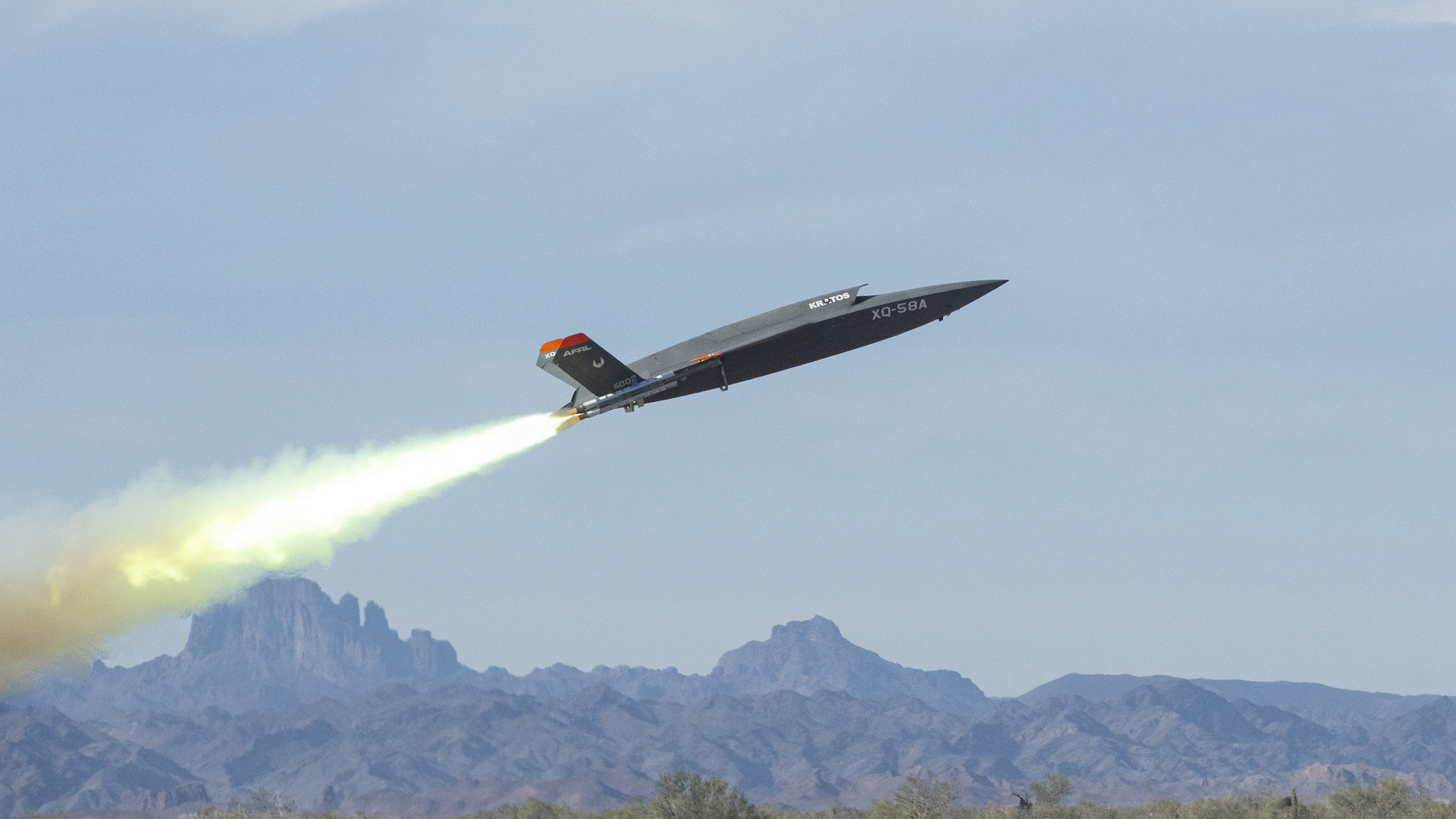

The Air Force is asking Congress for 1,000 new combat drones to accompany planes into battle. The announcement, from Air Force Secretary Frank Kendall, came March 7, as part of a broader push for Air Force modernization. It fits into a broader plan to combine crewed fighters, like F-35s and new designs, with drone escorts, thus expanding the scope of what the Air Force can do without similarly increasing the demand for new pilots.
Kendall spoke at the Air and Space Forces Association Warfare Symposium in Aurora, Colorado. The speech focused on what the Air Force can and must do to remain competitive with China, which Kendall referred to as “our packing challenge.” While the Air Force can outline its expectations and desires in a budget, it is ultimately up to Congress to set the funding sought by the military. That means Kendall’s call for 1,000 drones isn’t just an ask, it has to be a sales pitch.
“The [Department of the Air Force] is moving forward with a family of systems for the next generation of air dominance, that will include both the NGAD platform and the introduction of uncrewed collaborative aircraft to provide affordable mass and dramatically increased cost-effectiveness,” said Kendall. By NGAD (Next Generation Air Dominance), Kendall was referring to a concept for future fighter planning, where a new crewed fighter plane heads a family of systems that includes escort drones. One of these potential drone escorts is called the Collaborative Combat Aircraft, or CCA.
This Collaborative Combat Aircraft fits with the broader plans of the Air Force to augment and expand the number of aircraft it has by having drones fly as escorts and accessories to crewed and piloted fighters. These fighters include the existing and expanding inventory of F-35A stealth jets, as well as the next generation of planes planned for the future.
Kendall broke down the math like this: “[General Charles Q. Brown] and I have recently given our planners a nominal quantity of collaborative combat aircraft to assume for planning purposes. That planning assumption is 1,000 CCAs,” said Kendall. “This figure was derived from an assumed two CCAs per 200 NGAD platforms [equalling 400 drones], an additional two for each of 300 F-35s, for a total of a thousand.”
One reason for the Air Force to pursue drone escorts is because they can expand what the planes can do, without requiring another expensive craft of a vulnerable pilot. Stealth on an F-35A jet fighter protects the pilot and the $78 million plane. If a drone can fly alongside a plane, help it on missions, and costs a fraction of the crewed fighter, then it may make more sense for the drones to be, if not disposable, somewhat more expendable.
Previously, the Air Force referred to this as “attritable ,” a term coined to suggest the drones could be lost to combat (attrition), without emphasizing that the drones were built specifically to be lost. In Kendall’s remarks on March 7, he instead used the term “affordable mass,” which emphasizes the way these drones will increase the numbers of aircraft an enemy has to defeat in order to stop an aerial attack.
“One way to think of CCAs is as remotely controlled versions of the charting pods, electronic warfare pods, or weapons now carried under the wings of our crude aircraft. CCAs will dramatically improve the performance of our crude aircraft and significantly reduce the risk to our pilots,” said Kendall.
In this way, a drone escort flying alongside a fighter is just an extra set of bombs, cameras, missiles, or jammers, all in a detached body flying as an escort to the fighter. In 2017, the Air Force announced an attritable drone escort, using the Valkyrie built for the task by target drone maker Kratos.
The first Valkyrie is already a museum piece, but it represents a rough overview of the kind of cost and functions the Air Force may want in a Collaborative Combat Aircraft. Priced at around $2 million, a Valkyrie is not cheap, but it is much cheaper than the fighters it would fly alongside. As designed, it can fly for up to 3,400 miles, with a top speed of 650 mph. That would make it capable of operating in theater with a fighter, with escorts likely delivered to bases by ground transport and then synched up with the fighters before missions.
Getting drones to fly alongside crewed planes has been part of the Air Force’s Loyal Wingman program, which shifts the burden of flying onto onboard systems in the drone. Presently, drones used by the US, like the MQ-9 Reaper that crashed into the Black Sea, are labor-intensive, crewed by multiple shifts of remote pilots. To make drones labor-saving, they will need to work similar to a human compassion, receiving commands from a squad leader but independent enough to execute those commands without human hands on the controls. The Air Force is experimenting with AI piloting of jets, including having artificial intelligence fly a crewed F-16 in December.
Whatever shape these loyal wingmates end up taking, by asking for them in bulk, Kendall is making a clear bid. The age of fighter pilots in the Air Force may not be over, but for the wars of the future, they will be joined by robots as allies.
